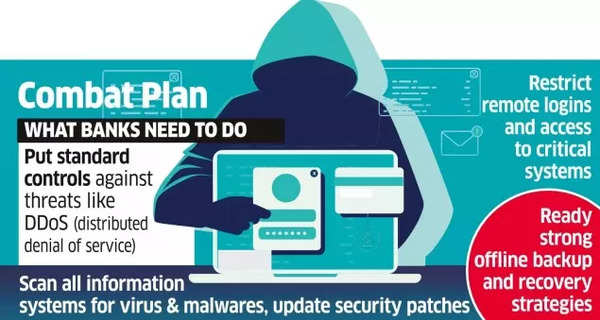Banks on alert! The Reserve Bank of India (
RBI
) has cautioned banks across the nation to be vigilant against potential
cyberattacks
, following credible intelligence reports. Banks have been instructed to actively monitor their systems round the clock to detect any threats.
In an advisory issued on June 24, the RBI said, “In the light of credible threat intelligence received regarding potential cyberattacks, regulated entities are advised to put in place enhanced state of surveillance and resilience capabilities to guard against these threats.”
According to an ET report, RBI’s communication preceded a social media post suggesting that
LulzSec
, a group notorious for several high-profile attacks, was targeting Indian banks.
The group, which was thought to have become inactive, is said to have resurfaced.
Banks are required to continuously monitor network activities and server logs to identify any malicious intrusions. Additionally, they must keep a close watch on critical payment systems, including SWIFT (the messaging system for international fund transfers), card networks (facilitating card payments), and domestic real-time fund transfer frameworks such as RTGS, NEFT, and UPI.
Cyber Attack Threat: Combat Plan
RBI has issued a reminder to banks, urging them to implement standard controls to safeguard against threats such as
DDoS
(distributed denial of service) attacks. These attacks involve hackers launching a coordinated assault on a bank’s systems, overwhelming them with a flood of queries that hinder the processing of legitimate customer requests and transactions on the website and online services.
In addition to DDoS protection, banks are required to impose restrictions on remote logins and access to critical systems. They must also conduct thorough scans of all information systems to detect viruses and malware, and ensure that the latest patches are installed after necessary testing.
Also Read | RBI’s overseas gold reserves drop to 6-year low! Share of gold held at home goes up to 53%
The RBI’s Financial Stability Report, released recently, highlights the alarming rise in cyber intrusions and digital attacks targeting the financial sector. Over the past two decades, these incidents have resulted in staggering losses amounting to $20 billion. The central bank has noted that cyberattacks tend to increase during times of political and economic instability, such as geopolitical tensions, leading to disruptive consequences.
An industry official told the financial daily, “About a year ago, a similar communication was issued by the regulator and CERT-In (the Computer Emergency Response Team under the ministry of electronics). Typically, when there is some hint of a possible cyberattack, banks simultaneously test the efficacy of their continuity and contingency plans. It’s the same this time”.
The regulatory communication emphasizes the importance of banks having robust offline backup and recovery strategies in place, and testing their effectiveness.
The official further stated, “Given the numerous instances of attacks, some of which may go unreported, authorities and institutions can’t take intelligence input lightly.”


